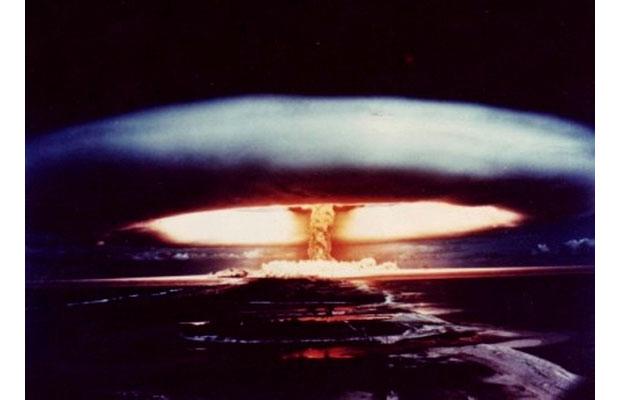
Defence experts believe detonating a nuclear device above the earth could cripple electronic systems, knock out water and electricity supplies and bring civilisation to a halt.
The abrupt pulse of electromagnetic radiation from a large explosion, such as that produced by a nuclear weapon high above the earth, produces rapidly changes electric and magnetic fields. They generate surges in voltage and current inside electronic equipement - burning out microchips and circuitry.
A nuclear electromagnetic pulse produces three waves of energy. The first is a very fast-moving, brief and intense electromagnetic field. It is created when gamma radiation from the nulcear explosion knocks electrons out of atoms in the earth's upper atmosphere. These electrons start moving downward and interact with the earth's magnetic field - creating a very large, brief pulse.
The second wave is generated by scattered gamma rays. It is similar to the pulses caused by lightning strikes and as such tends to be less damaging to equipment.
The third wave is a very slow pulse, lasting tens to hundrds of seconds, caused by the nuclear detonation driving the earth's magnetic field out the wave, followed by the field returning to its natural place. It can induce currents in long electrical conductors such as power lines, causing damage to substations and transformers.
The scale of the damage depends on the height of the explosion. A detonation at an altitude of 30 miles is calculated to cause damage for 480 miles around. At an altitude of 300 miles, the damage would radiate to 1470 miles - a field that would cover much of North America or Europe.
The strength of the pulse depends on the distance of the explosion from the earth's equator.
It is also possible to produce electromagnetic pulses without the use of nuclear weapons. Such devices have been fitted into bombs and missiles, but their range is far more limited because the explosion is far less powerful
Ships and military aeroplanes, particularly those carrying VIPs or nuclear weapons, can be hardened against EMP. In Britain equipment is tested on an EMP simulator at Farnborough airbase in Hampshire.
EMP pulses can also be naturally occuring. Solar flares see the release of large bursts of energy, including electrons and atoms, from the sun's corona.



Reader Comments
to our Newsletter